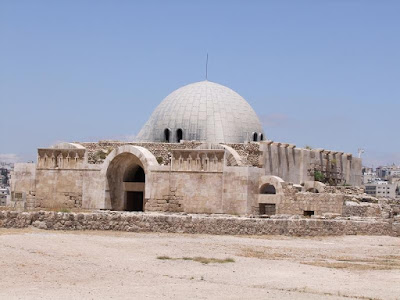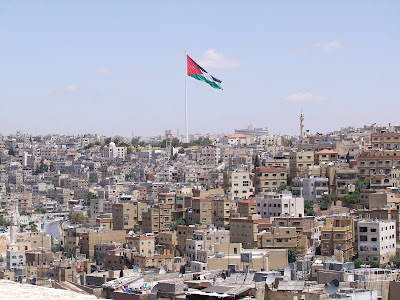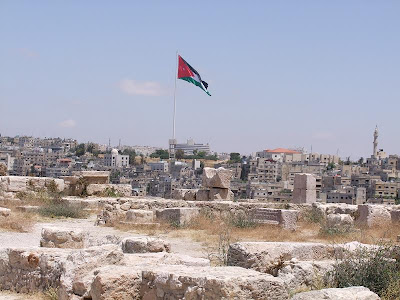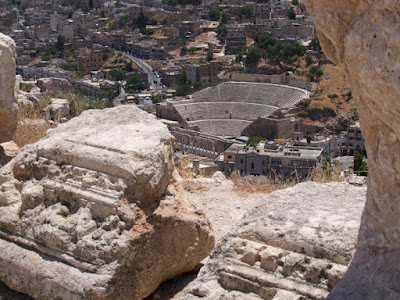


 Masjid Al–Husseini. The Ottoman–style mosque was rebuilt in 1924 by his late Majesty King Abdullah bin Al–Hussein, founder of modern Jordan, on the remains of a mosque built in 640 AD by the second Caliph, Umar Al–Khattab.
Masjid Al–Husseini. The Ottoman–style mosque was rebuilt in 1924 by his late Majesty King Abdullah bin Al–Hussein, founder of modern Jordan, on the remains of a mosque built in 640 AD by the second Caliph, Umar Al–Khattab.

 Ahl al–Kahf (Cave of the Seven Sleepers) as mentioned in Surah Al–Kahf of the Holy Quran.
Ahl al–Kahf (Cave of the Seven Sleepers) as mentioned in Surah Al–Kahf of the Holy Quran.The cave is located outside the village of Al–Raqim, 10 km east of Amman. Persecuted by the despotic rule of Trajan for monotheism, a group of pious youths took refuge in this cave. To preserve them, God put them to sleep, and when they revived 309 solar years later, they thought that they were only asleep for a day or so. Christianity was widespread by then, and when they were discovered, God put them to rest forever.
At the cave, there still stands Byzantine and Roman ruins as well as a mosque, which fit the descriptions exactly in the Holy Quran.
Photos by SkyJuice and Qusai Alazzam.
© All rights reserved.
© All rights reserved.
Amman is both the modern and ancient capital of Jordan, known under the Ammonites as Rabbat–Ammon and in Graeco–Roman times as Philadelphia. Amman is one of the oldest continuously inhabited cities in the world.
Described as a modern city built on the sands of time, Amman is a city of contracts – a blend of old and new, and is located on a hilly area between the desert and Jordan Valley. Originally spread over seven hills, Amman now covers at least nineteen hills.
Sources: www.ammancity.gov.jo/en and www.jtb.com.jo
Sources: www.ammancity.gov.jo/en and www.jtb.com.jo


































